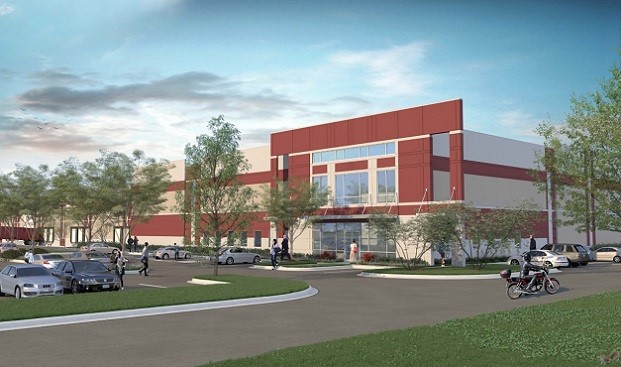 The Indianapolis region is setting records for new development and investment. The Opus Group recently started construction on this 495,977-square-foot speculative industrial development in Greenwood. IN, a southern suburb.
The Indianapolis region is setting records for new development and investment. The Opus Group recently started construction on this 495,977-square-foot speculative industrial development in Greenwood. IN, a southern suburb.
CHICAGO—As reported in GlobeSt.com, Marcus & Millichap recently published its 2018 North American Investment Forecast, and, as expected for such a thriving sector, the company says investors continue clamoring for these properties. “Average industrial cap rates have dropped to the low-7% range over the last three years, with a yield spread above the 10-year Treasury between 430 and 470 bps.”
But after several years of record-setting absorption and new construction, perhaps only one real question hangs over the market.
“Is 2018 the year when demand does not exceed new supply?” asks Kenneth J. Szady, national director for Marcus & Millichap | Institutional Property Advisors. “We’ll know in the fourth quarter.”
Until then, industrial properties will, just like the past few years, continue to trade fairly rapidly. In 2015, more than $60 billion in industrial properties changed hands, and that was the best year in at least thirty years, Szady says. Buyers have basically kept up that pace, and 2018 should generate similar numbers.
Much of the selling in 2018 will be attributed to the simple fact that “we are now in the peak years of new development,” Szady says. Developers completed about 250 million square feet of new buildings in 2017, and many of these buildings are hitting the market, and finding buyers, even before they are fully-leased.
He expects the competition for buildings worth between $25 million and $50 million, what he calls the industrial market’s “bread and butter,” will be particularly intense. Private investors tend to find these properties attractive, partly because of the sector’s strength, and partly because they can buy at this level and not unbalance their portfolio.
And all this competition will also result in many investors getting priced out of Chicago and the other core markets. “We’re seeing a tremendous flow of money into Southwest WI and Indianapolis,” Szady says, and the latter metro “has been fairly liquid for several years now.”
“I think Indianapolis remains hot,” he adds, although it’s a market that needs careful scrutiny as developers there reported the completion of at least 3.5 million square feet each year since 2013. In 2017, the metro delivered 6.3 million square feet. In the past few years, new development sometimes slowed when it temporarily outpaced demand.
Still, many investors will stick with Chicago, NJ, Southern CA and other core areas. And in response to the competitive environment, older buildings of lower quality will attract even more interest.

















 Copyright © 2024 ALM Global, LLC. All Rights Reserved.
Copyright © 2024 ALM Global, LLC. All Rights Reserved.